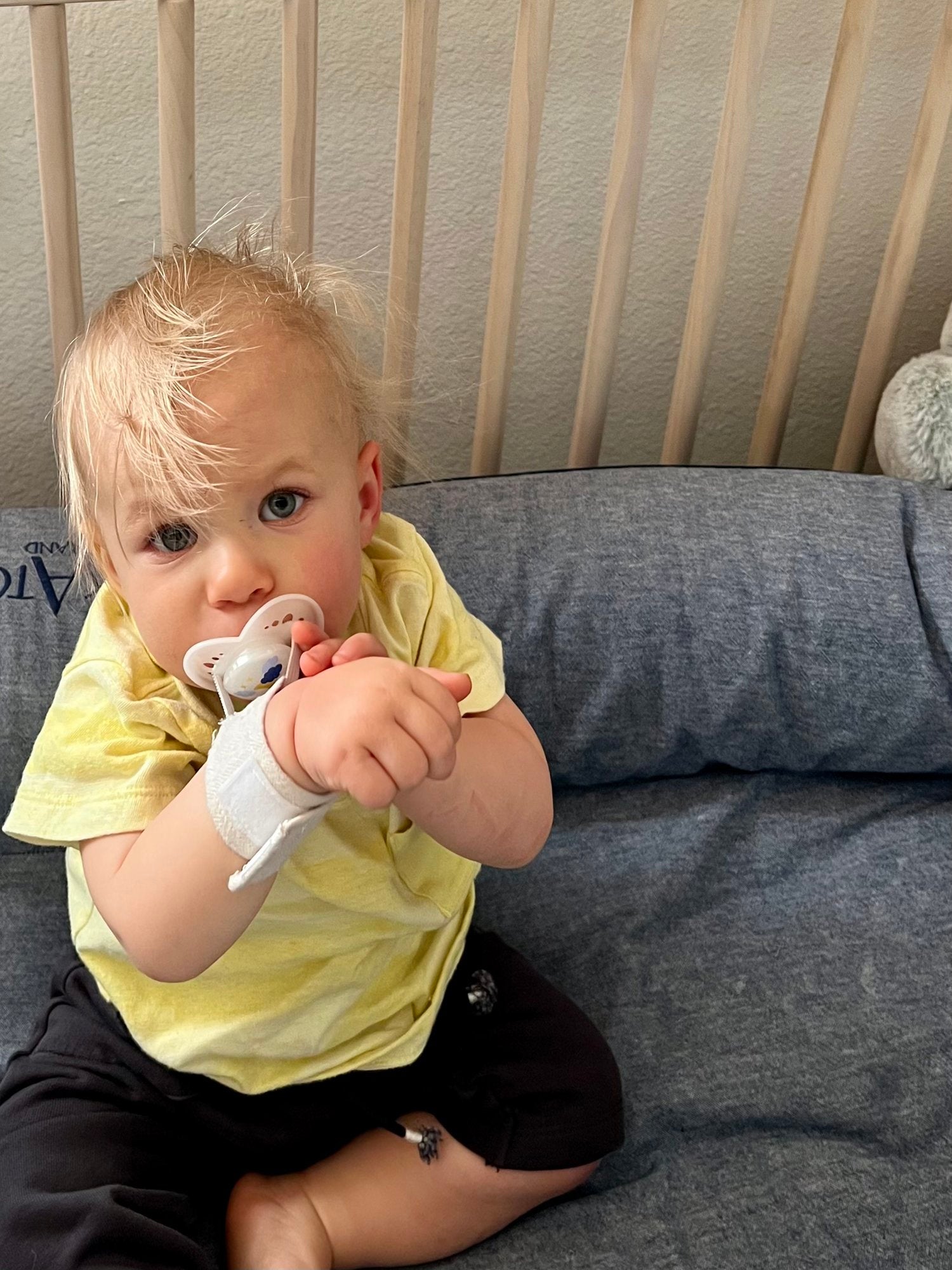
Why are there different pacifiers for different ages?
The good news is that although pacifiers need to be replaced as your baby grows, our pacifier wristband can be a constant for your child. I don’t know about you, but when I walk into the baby aisle at Walmart, it feels like sensory overload. There are so many different bottles, toys, breastfeeding accessories, and pacifiers!
For me, less is more. When there are too many options, I tend to get overwhelmed. I think this is because I’m scared of spending money on something my baby won’t like/use.
Luckily, an infant pacifier is inexpensive so there’s low stress when it comes to finding the right one. Check out our previous blog post for more specifics on finding the right kind of pacifier for your baby!
Something we didn’t touch on in that article was the need for a different pacifier as your baby gets older. You might remember the packaging for pacifiers usually has an age range on it.
Why is this? Aren’t they all the same? Does it really matter if my 8-month-old uses a pacifier meant for a newborn?
Yes, it does matter because all pacifiers aren’t the same. As your child grows, pacifiers also change shape and firmness. These age guidelines exist to keep your baby safe and ensure the pacifiers work effectively!
Growth: As your baby grows, their face will grow and the pacifier they used as a newborn won’t feel as normal. The nipple on pacifiers will get longer and firmer to accommodate your child’s growing mouth.
Strength: Your child’s sucking ability will strengthen as they age. If an older baby is using a 0-3 month pacifier older they can suck the shield into their mouth accidentally and choke. Pacifiers for older children are made with a larger shield to prevent this from happening.
When should you switch pacifiers?
The packaging on pacifiers has an age range on it, but each child is different. If your child is bigger or smaller for their age you will want to look out for additional signs to know when to switch pacifiers.
-Make sure they can keep the pacifier in their mouth easily. If they are spitting it out immediately it is a sign you should move up a size. Likewise, if it doesn’t seem to fit in their mouth they aren’t ready to move up!
-If your child has indents from the pacifier shield, they probably have a stronger suction than they used to. If you notice this, it’s time to move up a size!
No matter what age range your pacifier is for always make sure it is one piece and that you replace it every 4-6 weeks to keep your baby safe and hygienic!
The good news is that although pacifiers need to be replaced as your baby grows, the Ingy Bingy Band can be a constant for your child. The Ingy Bingy Band is a pacifier wristband that velcros around baby’s wrist. This pacifier bracelet attaches to 100% of pacifiers on the market thanks to the two different models of wristbands. No matter what brand or age your pacifier is, your newborn pacifier won’t keep falling out due to the patent-pending technology of the Ingy Bingy pacifier wristaband!

